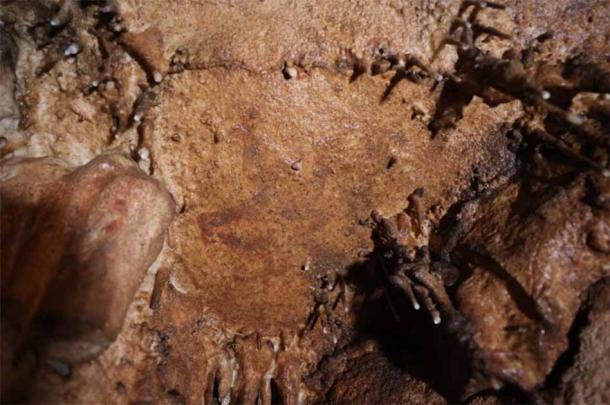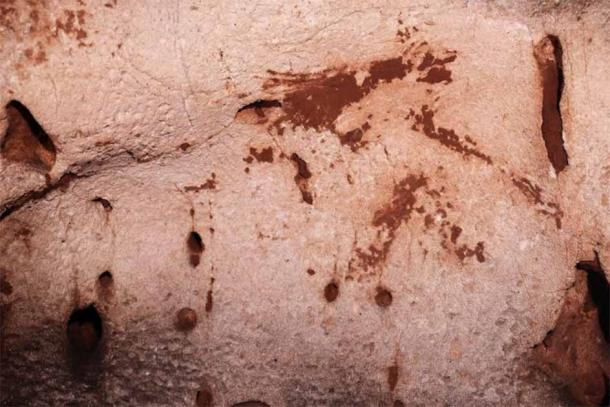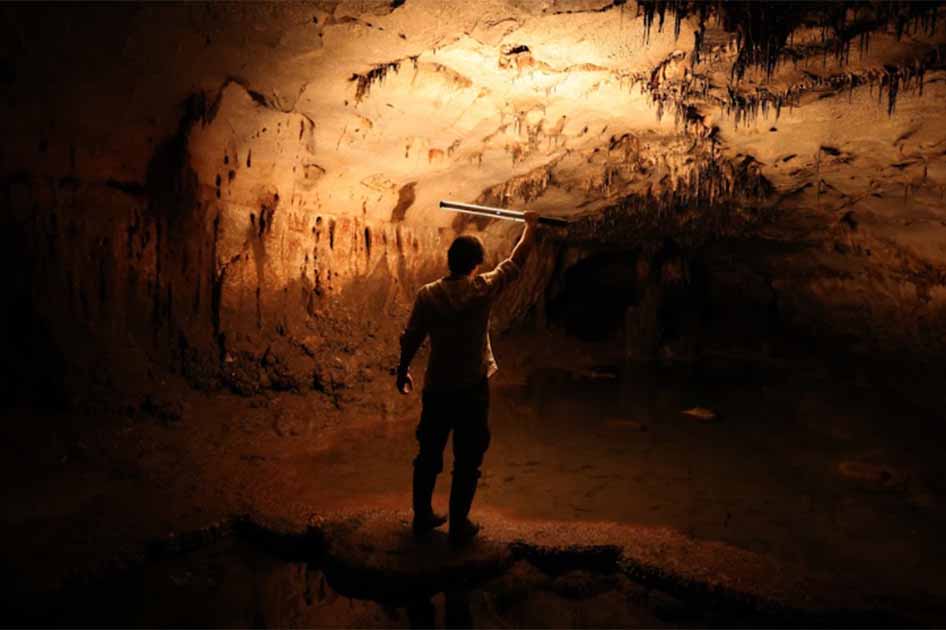Largest Collection of Cave Art Found in Eastern Spain Dated to 22,000 BC
A team of archaeologists from the Universities of Zaragoza and Alicante in Spain discovered a cave near the Eastern Iberian coast that is more heavily decorated with ancient artwork than any other site in the region. The early estimates are that the dozens of painted and engraved images found inside Cova Dones Cave were added to its limestone walls more than 24,000 years ago, when most of Europe was still covered with glaciers.
A Collection of Cave Art for the Ages
Cova Dones is located near the village of Millares in the province of Valencia along Spain’s Mediterranean coast. Cova Dones is expansive and deep, featuring multiple large caverns that run as much as 1,600 feet (500 m) underground.
Explorers have been visiting the cave since the 19th century, including researchers looking for signs of ancient human habitation. But it was only in 2021 that Spanish archaeologists Aitor Ruiz-Redondo from the University of Zaragoza and Virginia Barciela and Ximo Martorell from the University of Alicante finally observed some of the cave’s ancient artwork, which was hidden in plain site on walls found approximately 1,300 feet (400 m) from the cave’s entrance.
- Is 8,000-year-old Damaidi Rock Art the Origin of Chinese Writing?
- Malaysian Rock Art on Borneo Linked to Era of Conflict

Dr. Martorell and Dr. Barciela examining a 3D scan of a decorated panel. (© A. Ruiz-Redondo, V. Barciela & X. Martorell/Antiquity Publications Ltd)
Initially, the researchers spotted four faint images on one wall, which had been painted using red clay scooped up off the cave floor. They were quite pleased by this exciting discovery, but their pleasure was replaced with exhilaration in 2023, when a more extensive survey of the site revealed the presence of more than 100 images on the cave’s deep walls.
These images included a mixture of animals and geometric figures, which were the usual choices of European cave artists.
“The depicted animals are seven horses, seven hinds (female red deer), two aurochs, a stag, and two indeterminate animals,” the study authors wrote in article about their discoveries just published in Antiquity. “The rest of the art consists of conventional signs (rectangles, meanders), several panels of ‘macaroni’ (‘flutings’ made with either fingers or tools dragged across a soft surface), isolated lines, and poorly preserved unidentified paintings.”

A painted aurochs head found in the Cova Dones cave. (© A. Ruiz-Redondo, V. Barciela & X. Martorell/Antiquity Publications Ltd)
The animals commonly painted by Paleolithic cave artists were sources of food and other raw materials for the hunter-gatherer groups that inhabited the lands of Europe during the Upper Paleolithic period (50,000 to 12,000 years ago). The meanings of the geometric figures is more obscure, although it has been suggested that they relate to ancient spiritual beliefs and may be based on images seen by shamans exploring altered states of consciousness. Such states would have been easier to reach inside dark caves in conditions of sensory deprivation.
Most of the images (more than 80) were painted on, while the remainder were scratched or engraved into the cave’s soft limestone walls. Instead of using red ochre, the usual choice for Paleolithic period cave art, the people responsible for these paintings harvested the red clay that was available in abundance inside Cova Dones. This choice was rare for the region, although red clay was used by a few cave artists in other parts of Europe.
Dating the Cova Dones Art
One of the most important clues revealing the age of the cave paintings was left behind by cave bears. At various points in the cave these now-extinct inhabitants of Paleolithic Europe left scratch marks on the walls, some of which actually covered a few of the finger flutings made by the cave artists. Since the cave bear went extinct approximately 24,000 years ago, the archaeologists know the cave paintings must have been created at least this long ago.
From a stylistic standpoint, the images and their motifs resemble cave paintings found elsewhere in Europe that have been dated to between 22,000 and 19,000 BC. So it seems the images must have been made during the middle years of the Upper Paleolithic, when temperature extremes and droughts experienced during the Last Glacial Maximum rendered much of western and northern Europe uninhabitable.
In addition to the sheer number of images discovered, the finds at Cova Dones are highly significant for another reason, and that is their precise geographical location. The vast majority of cave paintings found in Europe have been discovered in the Franco-Cantabrian region, which includes the southern half of France and northern Spain. Conversely, less than 10 confirmed cave painting sites had ever been found in eastern Spain, suggesting that the cave painting culture of the Upper Paleolithic was largely confined to other areas.
But the incredible bounty of ancient cave imagery left behind inside Cova Dones clearly contradicts this assumption. While there are still not as many sites in the region overall, this cave contains one of the most extensive collections of cave paintings and engravings found anywhere on the continent.

Horse head painted with clay. (© A. Ruiz-Redondo, V. Barciela & X. Martorell/Antiquity Publications Ltd)
A Prehistoric Picture Gallery Documenting Ancient Life
The gallery of images found in Cova Dones is remarkable for its complexity and diversity. The only cave on the Iberian Peninsula that displays a similar range of motifs is Axturra in northern Spain, where extensive examples of ancient artwork were discovered in 2015. But there were only about 70 images found here in total, and they dated back only to about 12,500 BC.
What is most intriguing about the archaeological work at Cova Dones is that it is really just getting started. This cave is huge, reaching a depth of nearly one-third of a mile or half a kilometer, and there are still many of its walls that have yet to be fully examined for signs of human activity.
- Exploring Europe’s Oldest Known Cave Paintings (Video)
- New Technology Finds Barely Visible 28,000-year- old Cave Paintings in Spain
By the time archaeologists are finished combing the cave from top to bottom, they may discover that cave artists were using the site as their canvas for many generations, leaving behind rich collections of images that will reveal fascinating details about the belief systems and lifestyles of long-extinct prehistoric cultures.
Top image: Partly-flooded chamber of Cova Dones cave complex where the Paleolithic art has been detected. Source: © A. Ruiz-Redondo, V. Barciela & X. Martorell/ Antiquity Publications Ltd
By Nathan Falde

















